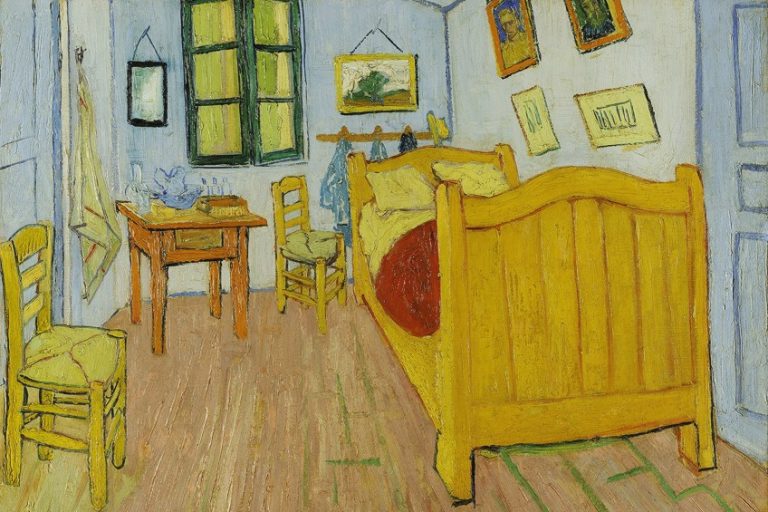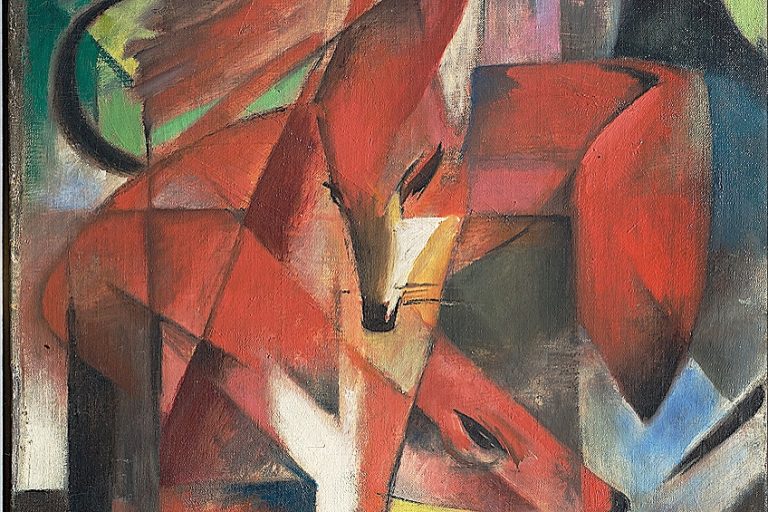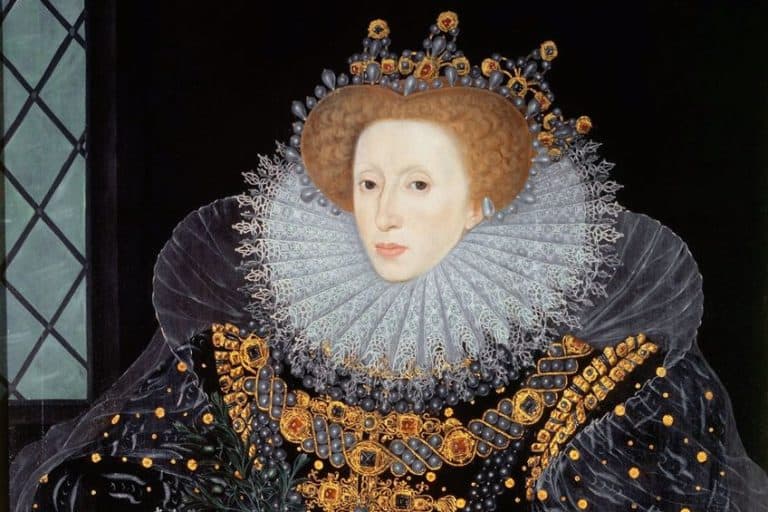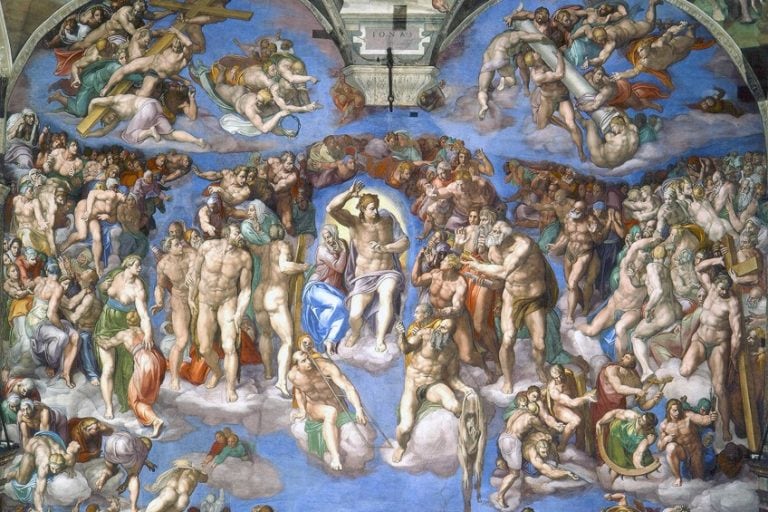“Stańczyk” by Jan Matejko – A Detailed Artwork Analysis
Step into the vibrant world of Polish history and art as we explore Jan Matejko’s iconic masterpiece, Stańczyk. With a brush dipped in wit and historical reverence, Matejko unveils the enigmatic court jester Stańczyk, a figure whose jests and jibes echo through the halls of power. Through Matejko’s keen eye and masterful strokes, Stańczyk transcends his role as a mere entertainer, becoming a poignant symbol of wit, wisdom, and the eternal dance between folly and foresight in the tumultuous tapestry of Polish history. Join us as we unravel the layers of this captivating painting, where laughter and lamentation intertwine in a spectacle that captivates both the eye and the imagination.
Key Takeaways
- Stańczyk is recognized as a masterpiece of Polish art, painted by Jan Matejko in 1862.
- The painting depicts a poignant moment of reflection for the jester against the backdrop of a historical event.
- It holds a revered place in the Warsaw National Museum, illustrating its significance and Matejko’s legacy.
Historical and Artistic Context
| Artist | Jan Matejko (1838 – 1893) |
| Date Created | 1862 |
| Medium | Oil on canvas |
| Genre | History painting |
| Period/Movement | Polish Romanticism |
| Dimensions (cm) | 120 x 88 |
| Series/Versions | Single version, no known series |
| Where Is It Housed? | Warsaw National Museum, Warsaw, Poland |
| What It Is Worth | Considered a national treasure, priceless |
Stańczyk is a notable oil painting by Jan Matejko, a distinguished Polish painter renowned for his detailed depictions of significant historical events in Poland. Completed in 1862, the painting portrays the titular character, Stańczyk, who was a court jester in the 16th century during the reign of King Sigismund I of Poland. Capturing a moment of solitary reflection, the jester is depicted amidst a lively ball while he solemnly contemplates the loss of Smolensk to the Russians—a lamentable event that occurred in 1514. The work’s emotional gravity and historical significance have made it an emblematic image within Polish cultural identity.

Jan Matejko’s mastery of historical painting is evidenced in Stańczyk, combining his talent for rich, narrative art with insightful commentary on Poland’s past. The piece now resides in the Warsaw National Museum, where it has been since 1924; its prominent place in the museum reflects its status as one of Matejko’s most renowned works and a treasure of Polish art. Through the painting, Matejko immortalizes the persona of the wise fool, whose visage is believed to be a self-portrait of the artist himself, adding another layer to the artwork’s historical and cultural value.
Jan Matejko’s Stańczyk serves as a bridge between Polish history and art, encapsulating the rich cultural heritage of Poland through the depiction of a poignant figure beset by the troubles of his time.
Stańczyk’s Role in Polish Culture
Stańczyk, the main subject of the painting, was a real historical figure and a court jester in the royal court of Polish kings, known primarily for his sage political commentary and role during the Renaissance in Poland. His witty insights often carried satirical undertones, critiquing the political landscape of the Commonwealth. Stańczyk became a symbol of Poland’s national identity; through Matejko’s art, he embodies the wisdom and sorrow concerning Polish historical events, emerging as a cultural icon.
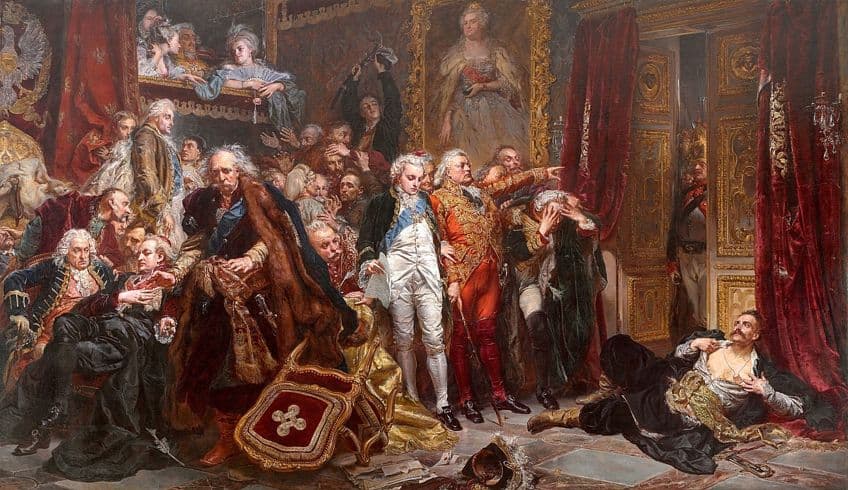
The Painting’s Significance
Created in 1862, Stańczyk by Jan Matejko is an oil on canvas that has established itself as an important piece of Polish art, representing a critical moment in Polish history—the loss of Smolensk during the Muscovite–Lithuanian War. The painting is widely regarded as a symbol of deep reflection and resilience. The jester is depicted alone against the backdrop of a lively ball, lost in thought amidst celebration, symbolizing the contrast between the Commonwealth’s declining power and the obliviousness of its society to impending crises. The piece is also notable for its rich symbolism; objects such as the comet in the night sky, Stańczyk’s marotte, and the letter concerning the battle of Smolensk enhance the painting’s emotional and historic depth, intensifying the portrayal of the solitary jester’s internal turmoil.
Stańczyk is housed at the Warsaw National Museum, adding to its provenance and significance in Polish culture.
Formal Analysis
In Stańczyk by Jan Matejko, the artist employs a rich palette, meticulous detail, and profound symbolism to convey complex themes.
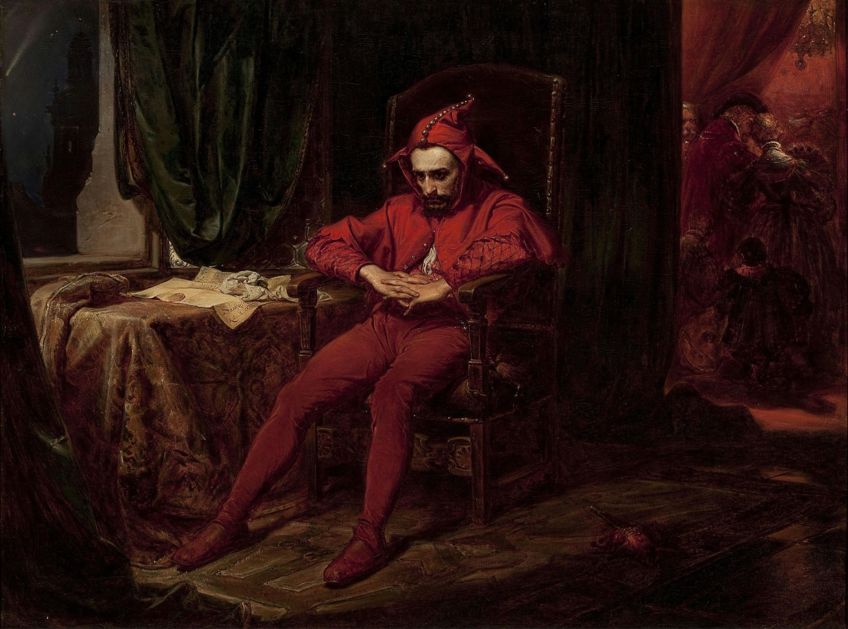
Use of Color
Matejko’s use of color in Stańczyk is purposeful, with a stark contrast between the deep reds of the jester’s robe and the darker background. This draws the viewer’s eye directly to the central figure.
This has the effect of emphasizing his contemplative state amidst the surrounding revelry.
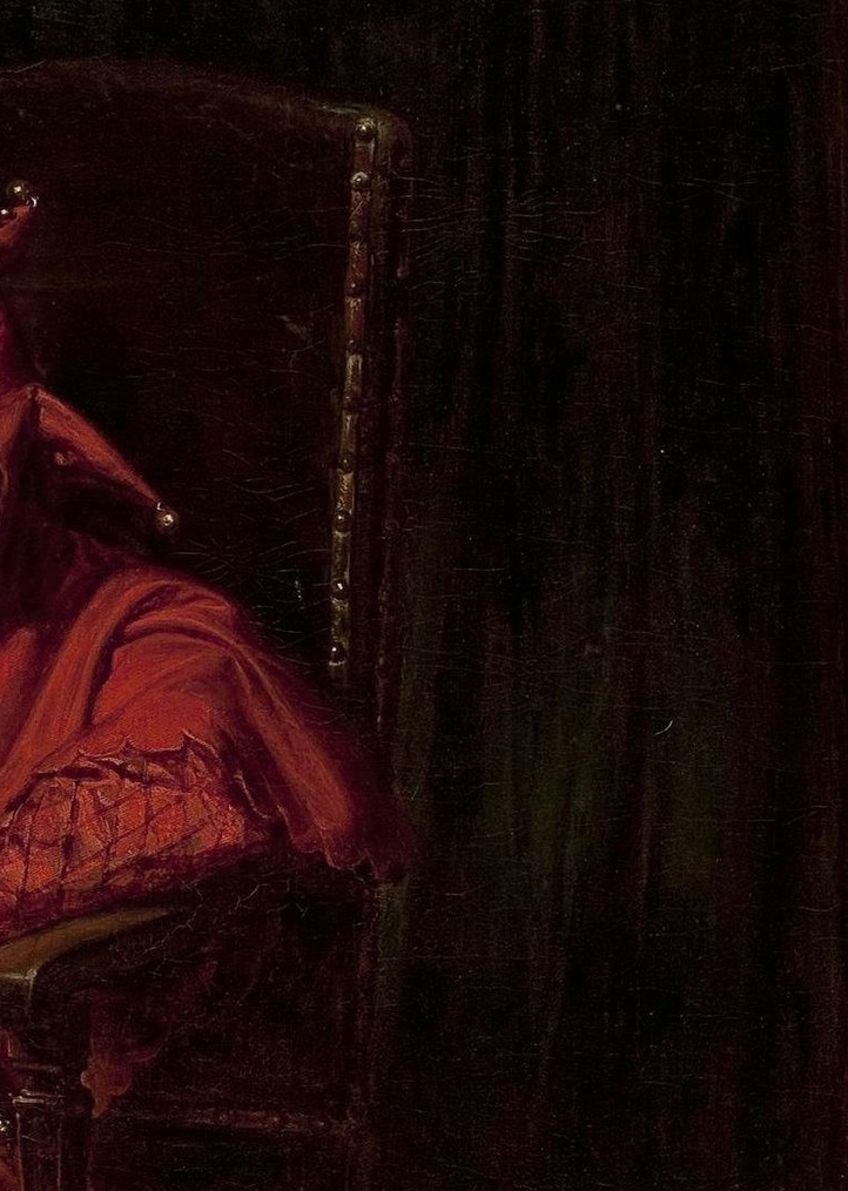
Subject Matter
The painting portrays Stańczyk, the court jester, solitary and pensive, separated from the festivities in the background.
His introspective demeanor contrasts starkly with the implied merriment beyond his immediate environment.

Texture and Detail
The texture of the jester’s attire is rendered with meticulous detail, from the shimmer of the silken fabrics to the softness of the fur collar. This level of detail extends to the surroundings.
Even the wooden floorboards and the folded letter contribute a sense of realism.

Symbolism and Themes
Stańczyk’s gestures and surroundings are imbued with symbolism. The letter on the floor represents the news of Smolensk’s capture, a national tragedy to which he alone seems to react.
His isolated state suggests themes of contemplation amidst ignorance and the jester’s unique position as both part of and apart from the courtly life.
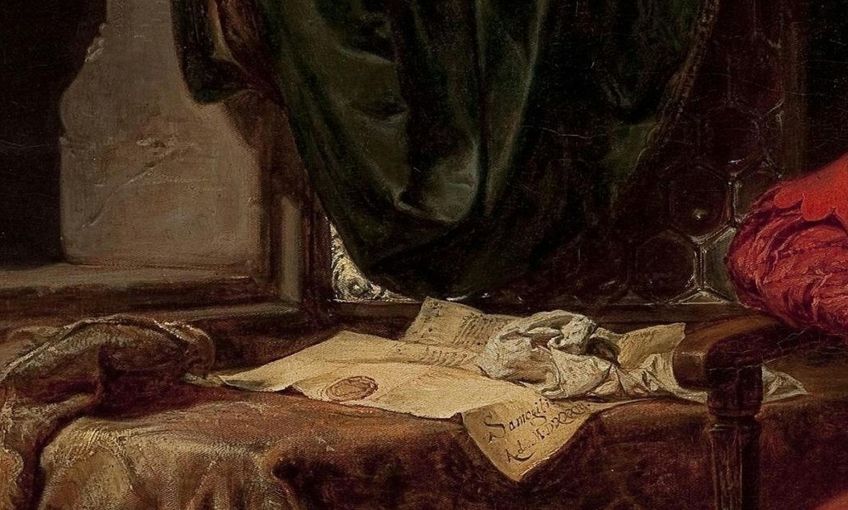
Meaning of Painting
The depiction of Stańczyk in a moment of solitary reflection on political events imparts the painting with a sense of gravity. It becomes more than a portrait of a jester.
It is a commentary on the role of a thoughtful individual in society during times of national concern.

Exhibition and Conservation
Stańczyk by Jan Matejko has been a prominent feature of Polish art exhibitions due to its significant historical and cultural value. First displayed in Matejko’s lifetime, the painting has found its long-term residence since 1924 in the Warsaw National Museum, where it continues to play a critical role in representing the heritage of Poland.
In terms of conservation, this masterpiece has faced challenges, particularly during World War II when it was seized by the Nazis. It was subsequently retrieved by the Soviet Union, eventually returning to its rightful place in Poland. The National Museum in Warsaw has since been responsible for the upkeep and preservation of Stańczyk.
The museum’s conservation efforts are crucial to protect the painting against environmental factors and the passage of time. Special attention is given to:
- Climate control: to maintain a stable environment that prevents deterioration.
- Preventive conservation: to avoid potential damage through public display measures and handling protocols.
- Restorative measures: occasionally needed to repair and maintain the painting’s integrity over the years.
The museum ensures that Stańczyk is accessible for both domestic and international audiences, while also safeguarding the artwork for future generations. These responsibilities highlight the balancing act that the institution must perform between exhibition and conservation – providing public access to Polish art while maintaining the artwork’s condition and longevity.
Influence and Legacy
Jan Matejko’s Stańczyk has secured a pivotal role in Polish art, embodying its historical context with enduring cultural resonance. Its influence extends beyond art circles, permeating Polish media and culture.

Depiction in Media and Culture
Stańczyk has been a defining image within Polish cultural identity, recurring in various forms of media representing resilience and introspection in the national psyche. It appears in literature, film, and educational materials, and its themes are reflected in other notable works by Matejko. For instance, Prussian Homage and Wesele also explore significant historical events and figures, with Stańczyk symbolizing the conscience of Poland during pivotal moments.
The painting’s character has inspired adaptations in contemporary media, where the figure is often used to invoke a sense of national reflection.
In theatrical productions, Stańczyk is frequently cited or embodied by characters that reflect the jester’s contemplative solitude, serving as a poignant counterweight to the plays’ themes, much like in Matejko’s own time when the painting was created. The jester remains a symbol of the solitary sage whose wisdom is veiled by his clownish exterior, often used as an archetype in exploring the complexities of Polish history and identity.
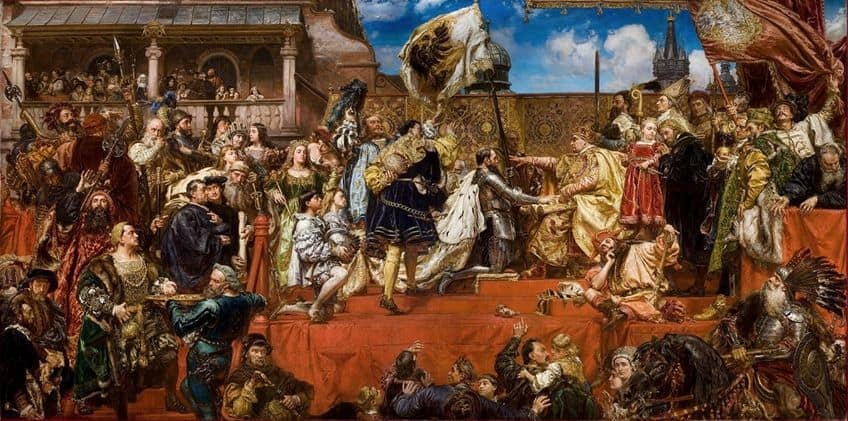
Moreover, Matejko’s role in education cannot be understated. His self-portraits and historical paintings, featuring figures like Stańczyk and Baranowski, have become key in teaching Polish history, with his works often serving as visual aids that encapsulate moments of pathos and patriotism. The legacy of Stańczyk and Matejko’s broader work continues to influence artists, such as Ignacy, who draw on his approach to historical narrative and representation. Matejko’s methodology in bringing complex emotions and historical awareness to art remains a benchmark for Polish artistic endeavors.
As we bid farewell to the colorful world of Jan Matejko’s Stańczyk, we find ourselves enriched by the laughter and poignancy woven into its very fabric. Like the jester himself, this masterpiece leaves us with a twinkle in our eye and a stirring in our hearts, reminding us that amidst the grandeur of history, it is often the jesters who hold the deepest truths. Through Matejko’s brush, Stańczyk emerges not only as a historical figure but as a timeless embodiment of humanity’s eternal quest for wisdom and wit. As we take our leave, let us carry with us the spirit of Stańczyk, ever ready to jest with the jesters and ponder with the sages, for in the dance of history, there is always room for both mirth and meaning.
Frequently Asked Questions
What Is the Historical Significance of Stańczyk by Jan Matejko?
Stańczyk is one of Jan Matejko’s most renowned paintings, completed in 1862, and stands as an iconic image in Poland. The work portrays the Polish court jester Stańczyk, who is often considered a symbol of Polish national consciousness, and reflects on Poland’s troubled history, particularly the loss of Smolensk to the Russians.
How Does Stańczyk Reflect the Political Climate of Poland During the Time It Was Painted?
The painting encapsulates the sentiments of 19th-century Poland under partitions, evoking a sense of loss and powerlessness. Through this evocative depiction of Stańczyk, Matejko conveys the psychological impact of Poland’s political situation on its national identity, characterizing the jester as both philosopher and patriot, mourning for his country.
What Are the Symbolic Elements Present in the Stańczyk Painting and Their Meanings?
Various elements within Stańczyk carry deep symbolism. The jester’s somber expression contrasts with his traditionally merry role, symbolizing the seriousness of Poland’s political strife. The letter on the floor, the feather in his cap, and the dark curtains all contribute to the narrative of national reflection during a time of historical consequence.
Isabella studied at the University of Cape Town in South Africa and graduated with a Bachelor of Arts majoring in English Literature & Language and Psychology. Throughout her undergraduate years, she took Art History as an additional subject and absolutely loved it. Building on from her art history knowledge that began in high school, art has always been a particular area of fascination for her. From learning about artworks previously unknown to her, or sharpening her existing understanding of specific works, the ability to continue learning within this interesting sphere excites her greatly.
Her focal points of interest in art history encompass profiling specific artists and art movements, as it is these areas where she is able to really dig deep into the rich narrative of the art world. Additionally, she particularly enjoys exploring the different artistic styles of the 20th century, as well as the important impact that female artists have had on the development of art history.
Learn more about Isabella Meyer and the Art in Context Team.
Cite this Article
Isabella, Meyer, ““Stańczyk” by Jan Matejko – A Detailed Artwork Analysis.” Art in Context. March 7, 2024. URL: https://artincontext.org/stanczyk-by-jan-matejko/
Meyer, I. (2024, 7 March). “Stańczyk” by Jan Matejko – A Detailed Artwork Analysis. Art in Context. https://artincontext.org/stanczyk-by-jan-matejko/
Meyer, Isabella. ““Stańczyk” by Jan Matejko – A Detailed Artwork Analysis.” Art in Context, March 7, 2024. https://artincontext.org/stanczyk-by-jan-matejko/.





